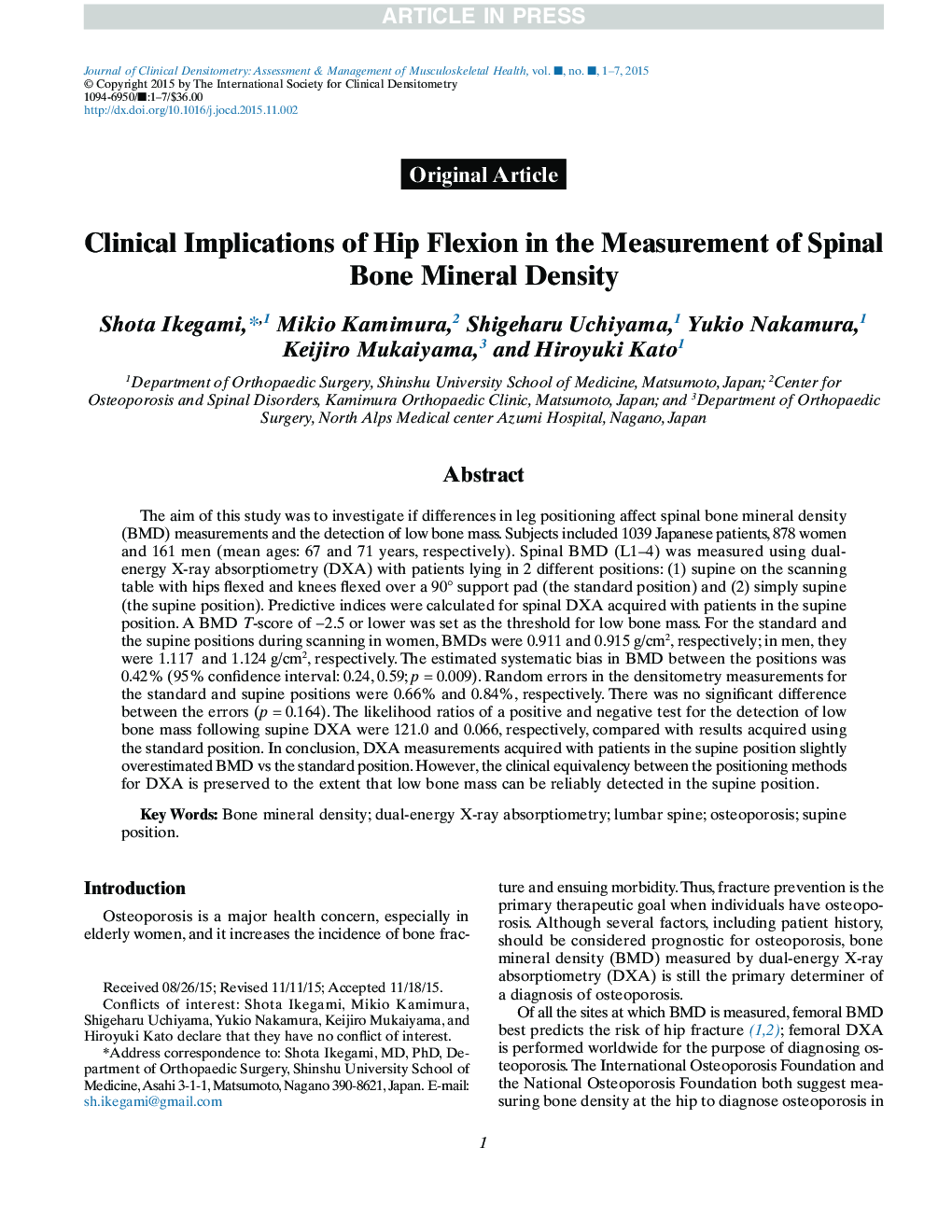| Article ID | Journal | Published Year | Pages | File Type |
|---|---|---|---|---|
| 8723268 | Journal of Clinical Densitometry | 2016 | 7 Pages |
Abstract
The aim of this study was to investigate if differences in leg positioning affect spinal bone mineral density (BMD) measurements and the detection of low bone mass. Subjects included 1039 Japanese patients, 878 women and 161 men (mean ages: 67 and 71 years, respectively). Spinal BMD (L1-4) was measured using dual-energy X-ray absorptiometry (DXA) with patients lying in 2 different positions: (1) supine on the scanning table with hips flexed and knees flexed over a 90° support pad (the standard position) and (2) simply supine (the supine position). Predictive indices were calculated for spinal DXA acquired with patients in the supine position. A BMD T-score of â2.5 or lower was set as the threshold for low bone mass. For the standard and the supine positions during scanning in women, BMDs were 0.911 and 0.915âg/cm2, respectively; in men, they were 1.117â and 1.124âg/cm2, respectively. The estimated systematic bias in BMD between the positions was 0.42% (95% confidence interval: 0.24, 0.59; pâ=â0.009). Random errors in the densitometry measurements for the standard and supine positions were 0.66% and 0.84%, respectively. There was no significant difference between the errors (pâ=â0.164). The likelihood ratios of a positive and negative test for the detection of low bone mass following supine DXA were 121.0 and 0.066, respectively, compared with results acquired using the standard position. In conclusion, DXA measurements acquired with patients in the supine position slightly overestimated BMD vs the standard position. However, the clinical equivalency between the positioning methods for DXA is preserved to the extent that low bone mass can be reliably detected in the supine position.
Keywords
Related Topics
Health Sciences
Medicine and Dentistry
Endocrinology, Diabetes and Metabolism
Authors
Shota Ikegami, Mikio Kamimura, Shigeharu Uchiyama, Yukio Nakamura, Keijiro Mukaiyama, Hiroyuki Kato,
